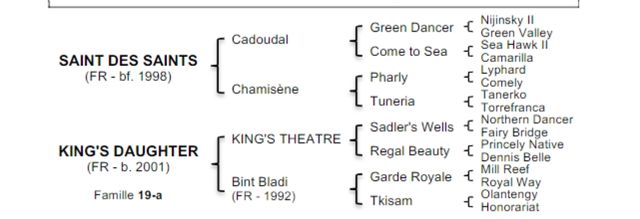When I was a business student, the text books loved case studies explaining how the nimble Japanese car industry took market share from the bloated US auto giants. In a bloodstock context this could be updated with a chapter on how the French breeding industry wiped the floor with their Irish rivals over the past two decades. The reasons are varied but include the French benefiting from :
1. The soundness and toughness brought by AQPS mares
2. The use of stallions who have proven that they can jump
3. The willingness to support stallions with unfashionable pedigrees and backgrounds
4. Smaller book sizes allowing opportunities to more stallions
5. Earlier timelines for NH racing allowing a quicker estimation of the merits or otherwise of a sire.
6. Not slavishly going for sire lines- in Ireland piling into sons of Galileo and sons of Monsun hasn’t worked. Now its unproven sons of Sea the Stars with whom breeders are rolling the dice.
7. Cooperatives. Some of the great success stories of Irish business came from the cooperative movement such as Kerry Group. We never adopted that model for bloodstock. Breeders in central France have banded together to back Haras de Cercy under a cooperative model. Irish breeders need to look at this model which has so many potential benefits and upsides for breeders. Cooperatives redress the imbalance of power between mare owners and stallion masters.
In recent years in Ireland we have routinely seen books of 250+ for unproven middle distance flat horses from the same few sire lines . There are now thousands of broodmares by failed NH sires that highlight the long term consequences of this herd mentality. In search of a quick fix, Irish stallion masters have now decided to purchase the better French young sires knowing that the economics of our huge book sizes make this approach financially viable. It will be interesting to see what sort of offers are made for the 9 year old sire who has just had two winners of three year old hurdles in France and who has all the qualities to become a major NH sire. That sire is Goliath du Berlais who stands at Haras de la Tuilerie.
Goliath Du Berlais’ Pedigree:

Pedigree Overview
Saint des Saints has become a stalwart of French breeding and enjoyed a stellar Cheltenham with three winners in Prokterat, Monmiral and Sine Nomine. He has also delivered as a broodmare sire and despite his age, still covered 81 mares in 2023 at €15000. King’s Daughter was a Grade 3 winner over hurdles as a three year old and she is a daughter of the outstanding 5 time champion NH sire in King’s Theatre. She has compiled an impressive record at stud with 7 winners and 4 black type winners. Aside from Goliath du Berlais, James Du Berlais (by Muhtathir) was runner up in a Punchestown Stayers Hurdle for Willie Mullins. Queen Du Buelais (by Muhtathir) was a Grade 3 hurdle winner and David Du Berlais (by Saints des Saints) was a Listed hurdle winner and is now at stud in Haras de Cercy. For good measure, Goliath Du Berlais’s second dam Bint Bladi is the dam of RSA Chase 2nd Lyreen Legend (also by Saints des Saints). It’s hard to fault this pedigree…
Goliath Du Berlais Racecourse Performance
Goliath Du Bearlais won 7 of his 12 starts culminating in an impressive 14 length victory in the 2019 Grade 1 Prix Ferdinand Dufaure chase at Auteuil as a four year old. Earlier that season he had won a Grade 2 and a pair of Grade 3’s for trainer Guillame Macaire. As an entire, this was more than sufficient to ensure his popularity once he was retired to Haras de la Tuilerie to stand alongside his sire Saint des Saints.
First runners:
Goliath’s first runners have certainly started with a bang. Two winners and two placed horses from four runners in French three year old hurdles is definitely impressive. This will be music to the ears of the breeders who utilised Goliath (140 in 2020, 131 in 2021, 119 in 2022 and 130 in 2023 so he will have big numbers to come. He seems poised for stardom. He retired at a fee of €7500 in 2020 and it is unchanged since then but if his electric start continues we can expect a significant price hike and big offers from Irish studs.